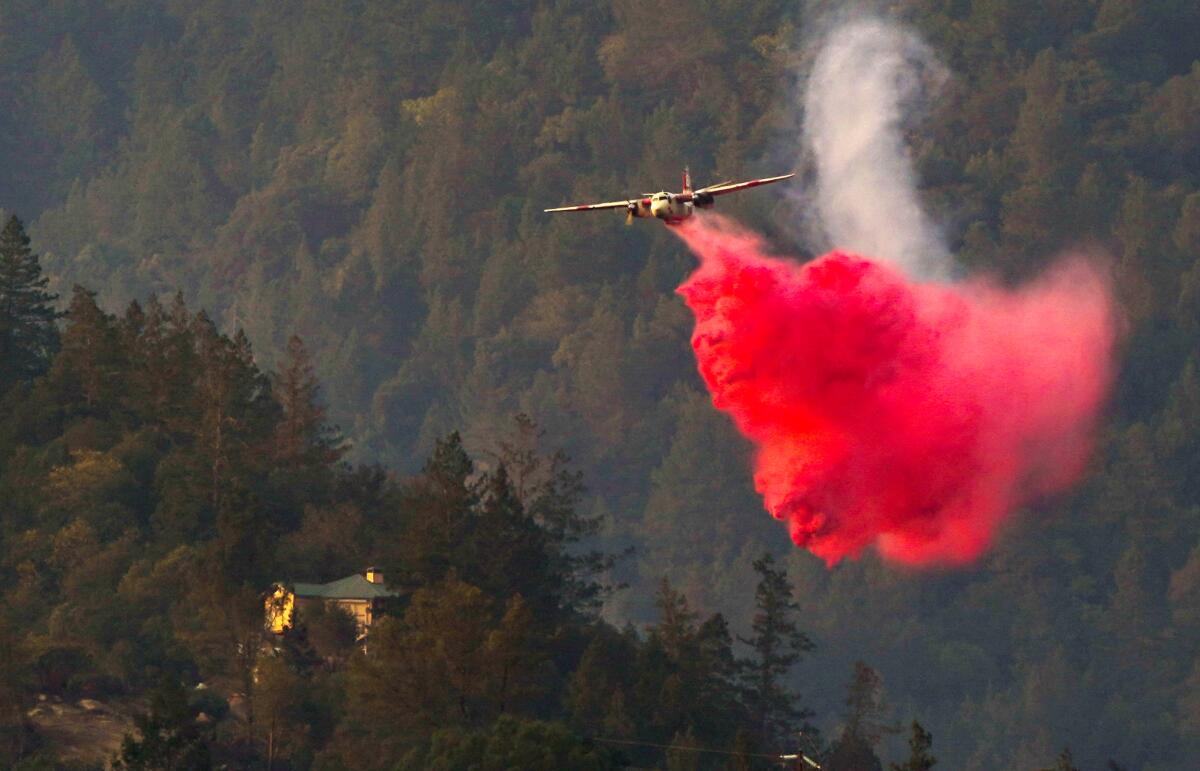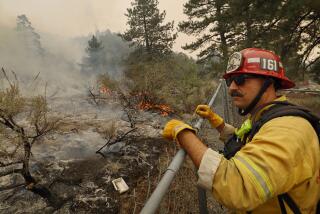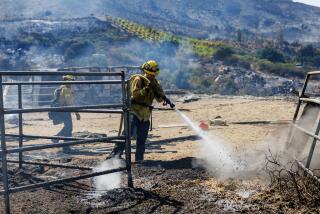One reason for Northern California’s terrible fire season: Less rain than Southern California

SAN FRANCISCO — Here’s one possible reason Northern California is faring so much worse than Southern California in this year’s terrible fire season: a lack of rain.
Northern California saw dramatically less rain than Southern California did over the last water year, which ended Wednesday. While downtown Los Angeles enjoyed 99% of its annual average rainfall, downtown San Francisco saw just 49%.
The pattern was seen across the state. Santa Rosa, the most populous city in Sonoma County, which was ravaged by the Glass fire now burning in wine country, saw just 53% of its annual average rainfall; San Diego, meanwhile, saw 132% of its annual rainfall.
Of the six largest fires in California history, five are currently burning, and all of them are in either Northern or Central California. More than 3.9 million acres have burned in California this year, a record in the state’s modern history, with the fires responsible for at least 30 deaths and the destruction of more than 7,500 structures.
The last full month of summer was also the hottest August on record in California, a reminder that the effects of climate change are a factor in the state’s worsening wildfire seasons.
Some scientists say climate change in California is causing dry periods to get drier while wet periods get wetter, making vegetation even more ripe for kindling.
Other factors contributing to the California fire season, an increasingly destructive cycle, include a powerful series of lightning storms that began in mid-August; tens of millions of dead trees across the state; a legacy of severe drought; bark beetle infestation; overgrown forests; a failure to thin forests of excess vegetation, such as through prescribed fire programs; and a decades-long legacy of massive housing development intruding into wildlands that are naturally prone to fast-moving wildfires whipped by Santa Ana and Diablo winds.
The return of fire weather in Northern California on Thursday stoked concern about the spread of existing fires.
After a midweek reprieve, red flag warnings were issued again by the National Weather Service starting Thursday afternoon for the San Francisco Bay Area’s hills, as well as portions of Lake, Mendocino and Monterey counties. They’re expected to last through Saturday.
Red flag warnings are issued when meteorologists are highly confident there will be dangerous fire weather.
Fires continue to rage in both Napa and Sonoma counties, where the Glass fire has burned more than 56,000 acres since Sunday and destroyed at least 143 single-family homes and a number of winery buildings; it is just 5% contained.
The weather service warned that winds were blowing in from the north and could push the fire toward the community of Angwin in the northern Napa Valley, which has a population of about 3,000. Angwin is home to a number of wineries, the liberal arts Pacific Union College, and a small airfield.
Winds on Thursday afternoon could reach gusts of up to 30 mph, and the air is expected to remain considerably dry Thursday night into Friday morning.
The heat was expected to spike again across Northern California, with temperatures as much as 25 degrees higher than the average for this time of year. Santa Rosa, where homes have been lost to the Glass fire, was expected to see a high of 104 degrees Thursday.
The entire town of Angwin is under a mandatory evacuation order, as is the entire town of Calistoga, with a population of more than 5,000, and a portion of St. Helena, where more than 6,000 residents live.
The rest of St. Helena is under an evacuation warning.
The 6-week-old Dolan fire burning in the Big Sur area of Monterey County is 87% contained, but as with the Glass fire in wine country, there’s worry that gusts of up to 30 mph could worsen that fire.
More to Read
Sign up for Essential California
The most important California stories and recommendations in your inbox every morning.
You may occasionally receive promotional content from the Los Angeles Times.











